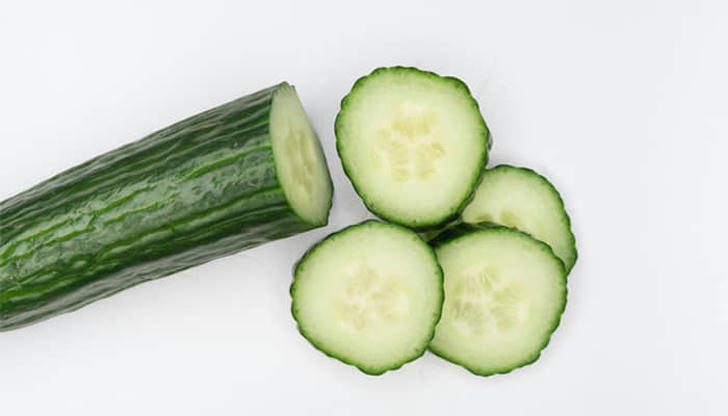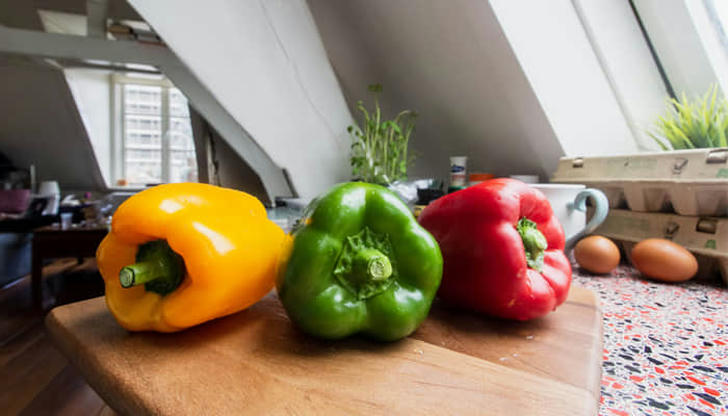To reduce your fridge's load, go ahead and remove these vegetables!

Many people enjoy hitting the farmer's market on weekends to stock up on veggies for the week, making it convenient and ensuring they don't miss out on nutrition.
But opening the fridge to find it jam-packed with veggies can be a bit overwhelming rather than feeling well-stocked. Plus, cramming too much in there can mess with the cooling effect since cold air needs enough space to circulate. So, to lighten the load on your fridge, it's time to take out some of those veggies! Remember, the fridge isn't a magical preservation box. Some veggies actually go bad faster when stored in the fridge. Check your fridge now to see if any of these veggies are hogging space. If they are, it's time to take them out!

Cucumbers
Cucumbers like warmth and don't do well in the cold. If you refrigerate them for more than 3 days, they may get waterlogged, lose their green color and flavor, and even become limp, turn yellow, soften, or rot. Storage method: Besides being sensitive to cold, cucumbers also don't like drafts. Wrap them in clean paper and store them in a cool, shady place. Try to finish them within 2-3 days.

Bell Peppers
Bell peppers are originally from tropical regions and are also sensitive to cold. Storage method: Wrap them in clean paper and store them in a cool, shady place at a temperature of 8-10°C. Try to finish them within a week. In the summer, try to finish them within 2-3 days.

Tomatoes
Tomatoes are originally from the tropical highlands of South America and don't like the cold, especially when they're not fully ripe. Refrigerating them can affect their ripening process and make them lose flavor and texture. Storage method: Just store them at room temperature. If they're fully ripe and you can't finish them right away, you can refrigerate them, but make sure the temperature isn't too low, around 5-7°C is best.

Onions
Onions have a dormancy period of 2-3 months. They can be stored in a cool, well-ventilated place. If stored in the refrigerator, the high humidity might cause them to sprout roots. Storage method: Store them in a cool, well-ventilated place. Be sure to keep an eye on them. Eat them before they start sprouting roots because once onions sprout, the nutrients will transfer to the roots and sprouts, making the main body soft, hollow, and reducing its quality, taste, and flavor.

Zucchinis
Zucchinis are sensitive to cold temperatures. When stored below 7°C, they can develop cold injuries, causing brown spots that spread over time. On the other hand, if stored above 15°C, they may lose moisture, turn yellow, and become limp, resulting in nutrient loss. Storage method: To store them properly, wrap zucchinis in clean paper and keep them in a cool place, ideally around 10°C. Aim to use them within 4-5 days to ensure freshness.
Veggies That Don't Need the Fridge
We often toss veggies in the fridge to keep them fresh longer, but some veggies stay fresh on their own without needing the cold. If your fridge is running out of space, you can take these veggies out.

Potatoes
Storage Method: Potatoes have a resting period of 2 to 4 months. Wrap them in clean paper or place them in a paper bag with the top open, then store them in a cool, dark place. Once the resting period is over, potatoes tend to sprout quickly, and their skin may turn green, indicating the presence of the toxic compound solanine. If you notice a small sprout on a potato, promptly cut out a large section around the sprout, and cook it thoroughly, such as by boiling with vinegar, to reduce the solanine content and prevent poisoning. If the potato has too many sprouts or has turned entirely green, it's best to discard it.

Carrots
Storage Method: It's recommended to buy carrots with soil on them, wrap them in clean paper, and store them in a cool, shady place for 7 to 10 days without any issues.

White Radish
It easily sprouts and develops a pithy core at temperatures of 4 to 5°C. Storage Method: If the radish comes with greens, trim them off to prevent the nutrients from transferring to the greens, which can cause the radish to develop hollow spaces. Wrap it in clean paper to reduce moisture loss from wind, spray a little water on the paper to increase the relative humidity around the radish, and store it in a cool, shady place for two to three days. If you need to store it longer, such as one to two weeks, it's better to refrigerate it at 0 to 3°C in the refrigerator.
